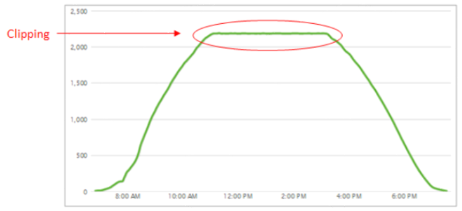Content provided courtesy of StraightUp Solar and ISEA Board President, Shannon Fulton
A common question in solar is “Why are you installing a 260 watt (W) solar module on a 215 W microinverter?” Or for central inverters, “Why is my system a 9,000 W system on a 8,000 W inverter?”
Solar modules don't produce their nameplate (DC) rating even with perfect sunlight that is perfectly oriented to the modules -- and even when this is approached, it's for very limited times in very specific, short-term situations.
When a solar module's nameplate says 300 watts, this means that in perfect conditions the module will produce 300 watts of power. In controlled conditions with a constant irradiance of 1,000 watts/sq. meter at 25 degrees Celsius or 77 degrees Fahrenheit, a manufacturer will measure how much power comes out of the module. This measurement is called Standard Test Conditions (STC for short), thus the nameplate rating is known as STC watts.
In the real world, the irradiance is usually lower and the temperature of the module is higher. The module production decreases with increase in temperature and decrease in irradiance. Dirt and soil covering the module will further reduce its production. The characteristics of each module in an array are never rigorously identical. Electrical losses occur due to slight differences caused by manufacturing imperfections, referred to as array mismatch loss.
The temperature loss, irradiance loss, dirt/soil loss and mismatch loss typically reduce an array's production by 20%. This is why the inverter is usually sized 80% of the array capacity. There will be a few days in a year when the modules will receive bright sunlight on a cool day. On such days the array will exceed the maximum input power capacity of the inverter and the system will experience minimal power clipping on the inverter monitoring as shown below.

This only occurs a few times and over the short and long-term, driving the inverters to their maximum production maximizes financial return and keeps the customer's up-front costs down by not buying more inverter capacity than is actually needed.